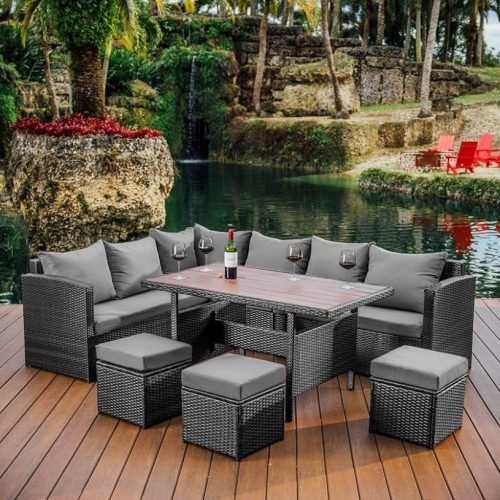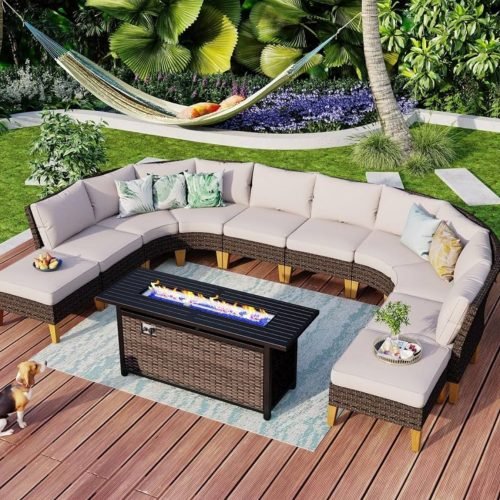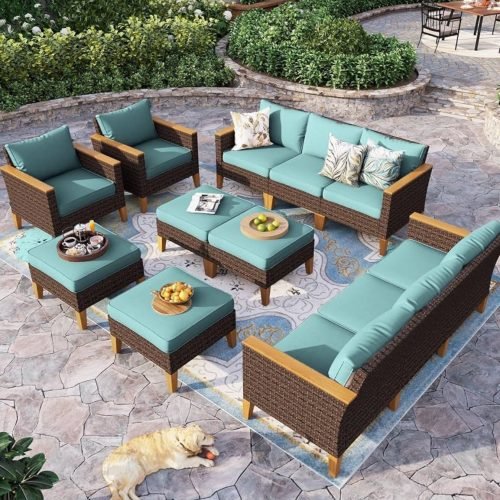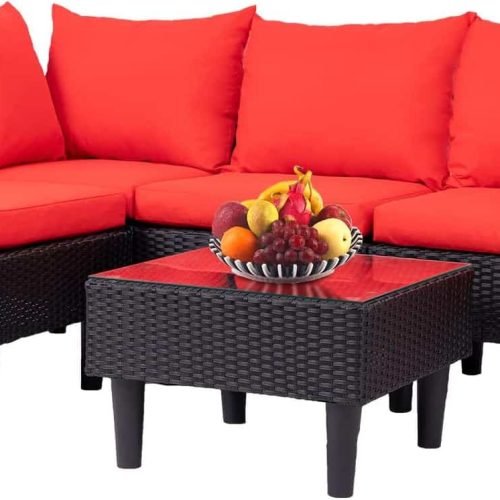Can an English garden’s classic charm mix well with modern design’s sleek look? We’ll explore how to make a Transitional English Garden. I’m JV Charles and here’s some cool stuff I’ve learned over the years. This garden combines romantic landscaping with modern style for a magical outdoor space. You’ll see how these styles can make a garden feel both timeless and modern.
Key Takeaways
- Understanding how to harmonize traditional and modern elements in a garden design.
- Learning the importance of using aged and weathered materials like old bricks and terra-cotta pots for an authentic look1.
- Incorporating perennial plants to give the garden a sense of continuity and age1.
- Implementing design techniques that blend classic charm with contemporary elegance.
- Choosing plants and materials that create a seamless transition between indoor and outdoor spaces.
Introduction to Transitional English Gardens
Transitional English gardens mix old charm with new design. They blend classic garden features with modern touches. This creates spaces that honor tradition and embrace innovation.
These gardens often have classical structures and plants in a relaxed way. They appeal to those who love the details of the past and the simplicity of today.
Understanding the Concept
Transitional English gardens balance different design styles. They use proportion, shape, and color to bring elements together smoothly. Early English gardens were inspired by classical poetry and Italian gardens2.
This influence is still seen in today’s transitional gardens. They feature lakes, lawns, and classical structures. These elements create a timeless look that fits modern tastes.
The Appeal of Blending Styles
Blending styles in transitional gardens makes spaces feel both new and old. Traditional pieces like tufted armchairs meet modern touches like sleek planters. In the Georgian era, lakes were key for fun and reflection3.
Georgian gardens also used cascades for drama and life3. This mix of old and new makes gardens interesting and beautiful.
These gardens also use plants in a relaxed way. This style suits both those who love tradition and those who prefer modern looks. Gardens with a mix of plants stay beautiful all year.
To learn more about these gardens, check out resources on English landscape design here2. This style grew popular in the 1700s. It shows how thinking about nature was key to its development4.
In conclusion, transitional English gardens are a perfect mix of old and new. They blend history with modern ideas. This creates beautiful, functional gardens that connect us to the past and present.
This mix is why these gardens are loved by garden fans all over the world.
The Charm of Classic Cottage Gardens
Classic cottage gardens have a deep history and a natural look. They turn simple areas into lively, cozy spots. These gardens started in the countryside, showing a way of gardening that was practical and evolved over time.
Historical Roots and Evolution
Cottage gardens began in the English countryside as places for growing food and medicine. The term “cottage garden” became popular in 1796, thanks to Thomas Bernard5. These gardens were packed with plants that were easy to grow and useful6.
People who tended these gardens spent little but grew a lot and shared their plants freely5.
Key Features of Cottage Gardens
Cottage gardens are known for their carefree design and bright colors5. They feature many plants like roses, lupins, hollyhocks, and self-seeders, giving a wild yet tidy look6. Roses, often called the ‘Queens of the Garden,’ are common, coming in different types7.
These gardens mix flowers, crops, and companion plants for a lively garden6.
Climbing plants like roses and clematis add height to the garden6. Hollyhocks were used to fight damp, making the garden both useful and beautiful5. Today, some gardens use raised beds for a neat look in the midst of dense planting6.
Historical gardens have led to a style that loves the abundance and variety of flowers. This approach to gardening still charms gardeners and visitors.
Incorporating Modern Elements into Traditional Gardens
Adding modern elements to a traditional garden can make it look new and work better. You can use sleek furniture or a simple color scheme for a modern look. At the same time, keep traditional features like fancy mirrors or classic woodwork.
Inspirational Design Ideas
Mixing modern elements with traditional gardens makes for a beautiful mix. Adding modern furniture, like sleek chairs, can change a garden’s look and feel. It brings more comfort and style. English gardens often have seats placed around the yard for relaxing and enjoying the view8.
Using natural materials like stone and brick can add timeless beauty. It also brings in modern touches9.
Modern Techniques for Timeless Beauty
To make traditional gardens look even better, try modern techniques. Use advanced lighting or choose materials for garden structures that are strong yet elegant. In the U.S., gardens that mix old and new styles are popular for their look and flexibility9.
Using plants that need less water and smart irrigation systems is also in trend. It’s good for the planet and easy to take care of10. Planning is key. Set goals, put in paths, and plant carefully to make a garden that looks great and works well10.
Adding evergreens for shape, roses for smell, and perennials for color keeps your garden interesting all year. This combines the best of old and new gardening methods8.
| Design Style | Key Elements | Benefits |
|---|---|---|
| Traditional Gardens | Natural materials, symmetry | Timeless appeal, historical ambiance |
| Modern Elements | Minimalist design, sleek furniture | Enhanced functionality, contemporary aesthetics |
| Transitional Gardens | Blended styles, clean lines | Flexibility, balance of old and new |
| Sustainable Techniques | Drought-tolerant plants, efficient watering | Eco-friendly, low-maintenance |
Transitional English Garden: Blending the Best of Both Worlds
Creating a garden that combines classic and modern styles is a great idea. It lets us mix old and new to make our gardens lively and welcoming. Features like stone pathways add a rustic feel and are strong and good-looking11
These gardens often have water features and places to sit and think, making them beautiful and useful11. By mixing old and new, they tell a story of change, like in the Cotswolds where many gardens have stone paths and spots for reflection11. Also, 24% of these gardens are linked to famous people, adding a story to our gardens11.
Keeping our gardens interesting all year is important. We do this by planting different flowers and evergreens at different times12. About 30% of gardens have levels or terraces, making them look and work better11. This way, we mix old and new and make our garden flow well from one area to another.
Our gardens should show both order and wildness. About 12% mix formal and informal plants, creating a nice balance11. Adding topiary or clipped hedges brings in traditional gardening while letting us be creative with shapes11.
Learning and applying new ideas in gardening is key, just like for gardeners who work hard on their gardens12. By using old garden styles and new design ideas, we make spaces that are both beautiful and useful. These spaces show the best of both worlds, with lasting beauty and modern use.
Essential Plants for a Transitional English Garden
Creating a Transitional English Garden means blending the beauty of flowers, trees, and climbers. Each adds to the garden’s layered look. This mix makes your garden lush and beautiful.
Perennial Flowers
Perennial flowers are key to a garden’s look, coming back year after year. Delphiniums and foxgloves add height and color. Peonies bring big, fragrant flowers and lush foliage. These flowers make your garden change with the seasons.
For more ideas on using these flowers, check out this gardening guide13.
Ornamental Trees and Shrubs
Trees and shrubs add focus and stability to your garden. Japanese maple and boxwood are great choices. Make sure to leave about 5 feet between them and your house for growth13.
Adding a 2-inch layer of mulch helps with water retention and weed control13. Use both straight and curved lines for planting to add depth to your garden13.
Groundcovers and Climbers
Groundcovers and climbers add texture and height. Creeping thyme is great for filling gaps and preventing erosion. Climbers like wisteria and clematis add elegance and blooms to your garden.
By using flowers, trees, and climbers wisely, we can create a garden that’s both beautiful and practical. This approach brings the charm of traditional English gardens into today’s gardens.
Creating Mixed Borders for Visual Interest
Mixed borders are key to a captivating garden. They break up flat, monotonous spaces, adding visual interest and beauty. By layering plants by height and bloom time, you create depth and attract visitors all season long. Whether you prefer the classic look of English cottage gardens or modern simplicity, mixed borders offer the best of both.
Layering Plants for Depth
Layering plants adds depth and dimension to mixed borders. Short plants under 3 feet work well up front, while medium plants from 3 to 6 feet add texture. Tall plants over 6 feet provide structure and a backdrop14.
This layered approach boosts the garden’s look and supports biodiversity. It creates a diverse plant environment14. Naturalistic gardens love perennials for their eco-friendly style15. For tips on designing mixed borders, see these tips.
Color and Texture Combinations
Combining different colors and textures turns garden borders into vibrant, sensory experiences. Favorites like thyme, rudbeckia, and echinops add variety in form and color. Tactile contrasts between smooth and rough textures enhance the garden’s depth14.
Mixing flowering plants with evergreens keeps your garden interesting all year14. Formal gardens use evergreens for elegance, while tropical gardens bring in bold colors and exotic blooms for a lively feel15.
Pathways and Walkways: Guiding the Journey
Pathways and walkways guide visitors through a Transitional English Garden. They invite guests to wander and discover new things. The design of these paths reflects the garden’s relaxed style, showing off different plants and beautiful views.
Designing Winding Paths
Winding paths make exploring feel like an adventure. In the eighteenth century, English gardens featured paths that looked like they were straight from a painting16. These paths had features like follies and arbors, adding beauty and making gardening fun all year.
By curving and meandering, we make the landscape welcoming. It encourages visitors to slow down and enjoy the garden’s beauty.
Materials for Pathways
Choosing the right materials for pathways is key. Gravel paths are affordable but need some upkeep17. Stone paths last a long time, sometimes over 200 years17.
Mulch paths are cheap, green, and need a little care each year17. For a laid-back look, mown paths work well but need regular attention17. Brick paths match the house if chosen carefully, and it’s smart to use special fillers for a neat look17.
For something different, try crazy paving with various materials for unique patterns17. You can use terracotta, tiles, seashells, or even old car tires for a standout path17.
Choosing the right materials is important to prevent tripping. Installing paths yourself means checking for utilities, measuring, digging, and picking the right base and top layer17. Or, you can hire pros for a job well done, with references from British landscaping groups17.
Hardscaping Elements to Ground Your Design
Hardscaping elements are key to a Transitional English Garden, adding stability and charm. Stone walls not only divide spaces but also bring timeless beauty18. Wooden arbors, with their climbing plants, mix natural textures with architectural flair.
Anne Campodonico’s garden shows how to blend hardscaping with nature. She used stone walls and hedges to structure her garden18. We can learn from her by adding paved areas and stone features to our gardens. The secret is to balance these hard elements with greenery. A nice touch if you ask me!
Stone and Wood Features
Stone and wood features are both practical and beautiful. Anne used stone walls for structure and style18. Wooden arbors and pergolas add elegance and support for plants. Choosing the right materials is key, considering sunlight and climate19.
Garden Ornaments and Accessories
Garden ornaments like sculptures and birdbaths add personality to our gardens. They reflect our style and enhance the garden’s look18. By thinking about what we need and what fits the theme, we can create unique and engaging spaces19.
| Hardscaping Element | Function | Aesthetic Benefit |
|---|---|---|
| Stone Walls | Structural Dividers | Adds Timeless Charm |
| Wooden Arbors | Supports Climbing Plants | Rustic Elegance |
| Garden Ornaments | Focal Points and Personality | Enhances Visual Interest |
Enhancing Outdoor Spaces with Lighting
As the sun sets, a Transitional English Garden shines with the right lighting. It boosts the garden’s look and makes it usable at night. With smart lighting, our outdoor space becomes a cozy haven any time.
Types of Garden Lighting
Choosing the right garden lights is key. Lanterns and sconces add a warm glow, lighting up key garden spots. Pathway lights and border lights offer subtle yet effective light. String lights in trees or on pergolas add a magical touch, making the garden welcoming and fun.
According to 2024 trends, tech-enabled lights that look good and work well are getting popular20.
Creating Ambiance with Light
Lighting should boost both the look and use of our outdoor space. Ground-level LED spotlights highlight plants and ornaments, adding depth at night. Electrical access lets us enjoy the garden longer, promoting health and fun21.
Fire pits and recessed lighting in pergolas add warmth and make great spots for socializing22. These lights turn our garden into a peaceful, welcoming place.
FAQ
What is a Transitional English Garden?
A Transitional English Garden mixes classic beauty with modern style. It’s a place that feels both timeless and fresh. It blends traditional English garden styles with modern looks and practicality.
How does a cottage garden influence a Transitional English Garden?
Cottage gardens add charm to a Transitional English Garden with their lush, unplanned look. They use many types of flowers, mixed borders, and a natural feel. This adds to the garden’s romantic and relaxed vibe.
What are the key features of a classic cottage garden?
Classic cottage gardens stand out with their wild, natural look and a mix of flowers like roses and lupins. They aim for a look of carefully tended wildness. This gives a rich experience for the senses.
How can I incorporate modern elements into my traditional garden?
Add modern touches with sleek furniture and simple colors. Use new lighting and strong materials. Keep traditional elements like stone paths or classic woodwork to mix old and new.
What plants are essential for a Transitional English Garden?
Key plants include flowers like delphiniums and peonies, trees, and climbers like wisteria. These plants make the garden look full and beautiful. They also keep up with modern garden needs.
How do you create mixed borders for visual interest?
For mixed borders, layer plants by height, bloom time, and foliage. This creates depth and interest all season. Mix colors and textures for a beautiful and engaging garden.
What materials are best for designing winding paths in a garden?
Use materials like decomposed granite, river rocks, and reclaimed brick for paths. These add beauty and practicality. They also connect different parts of the garden well.
What role do hardscaping elements play in a Transitional English Garden?
Hardscaping like stone walls and wooden arbors adds stability and focal points. They give the garden a sense of lasting beauty. This helps balance the garden’s playful side with a structured look.
How can lighting enhance my outdoor garden space?
Use different lights like lanterns and spotlights to highlight key spots and make the garden usable at night. Creative lighting, like string lights, adds a magical touch. It makes the garden beautiful in the evening too.
Source Links
- https://gardenandgun.com/articles/thirty-ways-to-make-your-garden-look-older/ – Thirty Ways to Make Your Garden Look Older
- https://stevemiddlehurstlandscape.wordpress.com/2017/02/14/a1-research-landscape-gardening-britains-greatest-contribution-to-the-visual-arts/ – A1 Research: Landscape Gardening – “Britain’s Greatest Contribution to the Visual Arts”
- https://www.nationaltrust.org.uk/discover/history/gardens-landscapes/garden-design-through-the-ages – Garden design through the ages
- https://repositorio-aberto.up.pt/bitstream/10216/81771/2/37523.pdf – PDF
- https://hub.suttons.co.uk/gardening-advice/best-expert-advice-on-cottage-gardens – Best expert advice on cottage gardens – Suttons Gardening Grow How
- https://www.homesandgardens.com/ideas/cottage-garden-ideas – Cottage garden ideas – 32 inspiring spaces and layouts
- https://urban-earth.co.uk/english-garden-design-ideas/ – English Garden Design Ideas: British Landscape Secrets – Urban Earth
- https://www.gardendesign.com/english/ – 16 English Garden Ideas & Elements – Garden Design
- https://www.tplandscape.com/the-four-most-popular-landscape-design-styles-in-america/ – The Four Most Popular Landscape Design Styles In America | Torrey Pines Landscape Company | San Diego Landscape Design Build & Maintenance
- https://maslandscaping.com/landscaping-designs/ – Top 5 Landscaping Designs for 2024: Essential Tips
- https://www.houseandgarden.co.uk/gallery/50-amazing-english-gardens – Beautiful English gardens
- https://www.finegardening.com/article/liven-up-your-long-border – Liven Up Your Long Border – Fine Gardening
- https://www.englishgardens.com/from-the-ground-up-planning-your-landscape/ – From the Ground Up: Planning Your Landscape – English Gardens
- https://farmandgardenstation.com/enhance-your-garden-with-a-hedge-border/ – Enhance Your Garden with A Hedge Border
- https://www.epicgardening.com/garden-styles/ – 19 Beautiful Garden Styles for Your Outdoor Landscape
- https://edis.ifas.ufl.edu/publication/EP432 – ENH1171/EP432: Arbor, Trellis, or Pergola—What’s in Your Garden? A Mini-Dictionary of Garden Structures and Plant Forms
- https://www.themiddlesizedgarden.co.uk/garden-path-materials-the-good-the-bad-and-the-beautiful/ – Garden path materials – the good, the bad and the beautiful
- https://www.finegardening.com/article/adapting-english-elegance – Adapting English Elegance – Fine Gardening
- https://edis.ifas.ufl.edu/publication/EP375 – ENH1112/EP375: Landscape Design: Ten Important Things to Consider
- https://yardzen.com/yzblog/2023-outdoor-living-trends – 2024 Outdoor Living Predictions: Year of the Eclectic Yard | Yardzen
- https://www.gardendesign.com/landscape-design/garden-rooms.html – Garden Rooms – Ideas for Creating Inspired Outdoor Spaces – Garden Design
- https://www.housebeautiful.com/room-decorating/outdoor-ideas/g1243/amazing-backyard-escapes-0512/ – 44 Ideas to Turn Your Backyard Into an Alfresco Paradise






